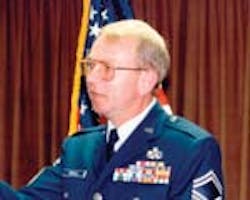Ron Ansell: Your Second Career Can Be Akin To Your First
Q: How did you get started in ground support equipment?
A: Like so many young men before me and so many young men and women after me, I got my first exposure to aircraft ground support equipment when I was in the US Military. Like so many other young people in my generation, growing up in rural America included solid family and community values; not the least of which was a strong sense of patriotism. A few months after high school graduation, I enlisted in the US Air Force. After completing military basic training at Lackland AFB, TX, I was asked to choose a career field in which to work. Being 18 years old, with no hair and still saluting and "sir"ing everything that moved, I didn't yet know much about the USAF or the career fields. However, Aerospace Ground Equipment (AGE) sounded like something I might like so I listed it as one of my three choices. AGE is what I got so off to technical training school at Chanute AFB, IL, I went to begin what has now been a 34 year career in GSE.
Q: Is the USAF's AGE the same as the Airline's GSE?
A: Yes and No. The Airline's GSE is broader than the USAF's AGE. AGE, which was painted yellow and often referred to as "Yellow-Iron" when I first entered the career field, is divided into two categories: powered and non-powered. Powered AGE includes portable engine and electric-motor driven items such as: generators, hydraulic test stands, floodlights, air conditioners, heaters, bomblifts, air start carts, air compressors and cabin leakage testers. Non-powered AGE consists of a variety of different items such as: maintenance stands, munitions trailers, servicing carts, cranes, fuel bowsers, aircraft towbars and aircraft jacks.
Q: What was most memorable about your USAF career?
A: Everything! However, my two overseas duty assignments and my duty assignment in the Pentagon will always be special. My first overseas assignment was a tour of duty in Southeast Asia with the 40th Aerospace Rescue & Recovery Squadron. The Vietnam War may not have been popular with many in our country, but being a part of an organization that "saves lives" in combat and in hostile territory is something special. Meeting the helicopter when it returns from a successful mission of rescuing a downed pilot or crewman from becoming a POW or worse, KIA, and the celebration that followed those completed missions, is something that I'll never forget. The rescue community dedicates themselves and lives by the motto ? "So That Others May Live!"
My second tour of duty overseas was in Great Britain with the 20th Tactical Fighter Wing at RAF Upper Heyford, England. This was memorable for me because it took place during the Cold War and the 20th TFW F-111E fighter aircraft was one of our key weapon systems used to deter a possible attack or aggression on our NATO allies or the USA by the USSR. We won the Cold War!"
And my last assignment was with Headquarters USAF on the Air Staff in the Pentagon. It was my longest assignment ? 7? years. I was assigned to the Directorate of Maintenance as the logistics program manager for aircraft systems and support equipment. During my first few years I was the only enlisted aircraft maintainer in the Pentagon and the only enlisted Program Element Monitor (PEM) on the Air Staff. As the PEM for Common Support Equipment Development, I was responsible for advocating and defending SE programs and funding through the Air Force corporate structure, OSD staff, and Congress. I also chaired the USAF Aircraft Ground Support Equipment Working Group (AGSEWG) and served as the senior technical advisor during the annual USAF Buy & Budget review for the SE procurement budget.
But without a doubt the most memorable part will be the people I met, worked with and for, and the lifelong friendships I made throughout my USAF career. To all of them I tip my hat and say, "thanks for all your help and friendship!" God Bless You.
Q: How have you stayed involved in GSE?
A: After I retired from the USAF in 1997 I was asked by a friend if I was interested in working on the F-35 Joint Strike Fighter (JSF) Program. I accepted the job offer from Dynamics Research Corporation (DRC) and began supporting the government on the JSF program. DRC has been supporting the JSF Program Office since 1995. The F-35 JSF is a multi-Service (USAF, USN and USMC) and international cooperation next-generation, multi-role strike fighter warplane. One of the four pillars of the program is "supportability." The term "Autonomic Logistics" has been coined to describe an essentially automatic set of processes to ensure maximum sortie generation with minimum logistics footprint and cost, while still maintaining high mission reliability. As a senior logistics analyst and task lead, I'm involved in all aspects of the logistics footprint; including support equipment, spares and manpower. As a member of the SE Integrated Product Team (IPT) I have an opportunity to review and provide comments about all the SE identified for possible support of the F-35 JSF. This may be the last manned fighter program in our military history and I can't think of any other program or work that I'd rather be doing then what I am doing now. I'm delighted to be working for DRC and proud to be part of the JSF Team!
And once again in my life I'm both honored and humbled by my GSE peers. Thank you Ground Support Magazine for featuring me in your V.I.P. section.
